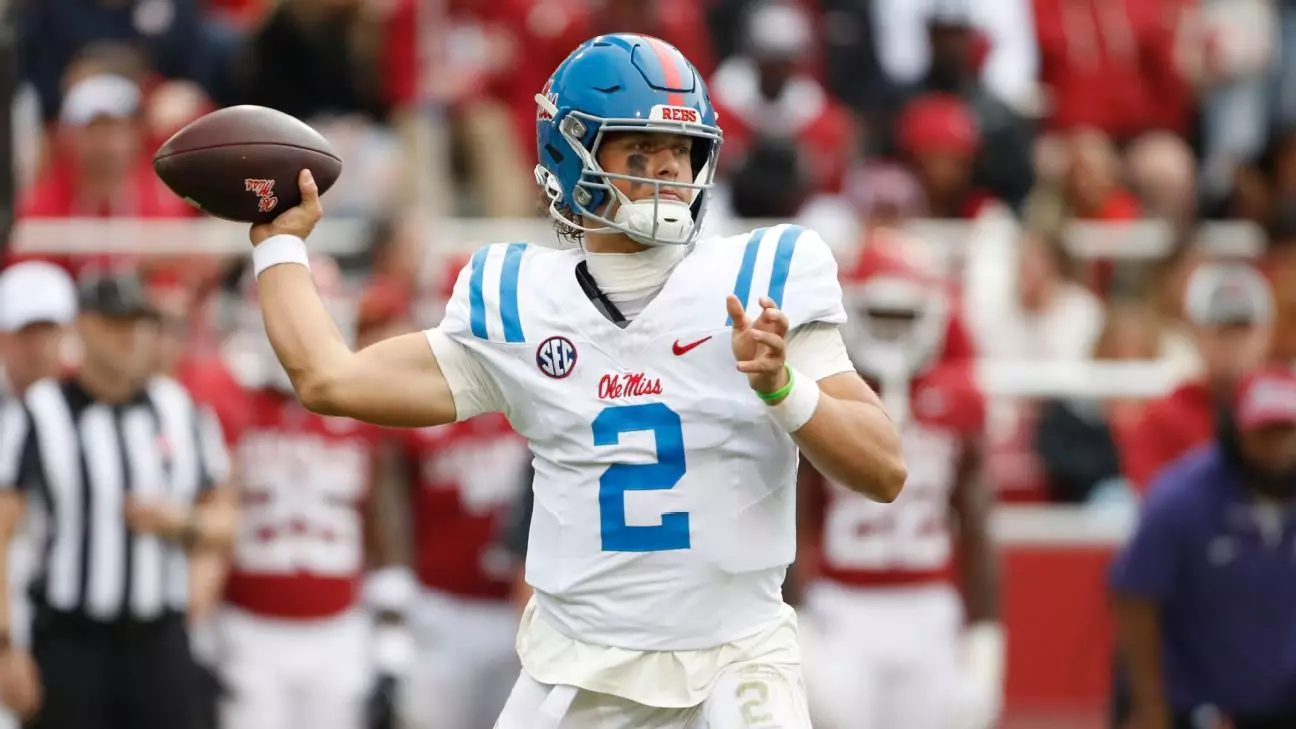In a move that has caught the attention of analysts and fans alike, the New York Giants made a significant splash in the recent NFL draft by selecting highly touted linebacker Abdul Carter with the third overall pick. This strategic choice demonstrates the team’s clear vision of building a more formidable defense, a notion that resonates deeply considering the franchise’s rich history centered around defensive strength. Shortly after, the Giants sought to secure their future under center by trading back into the first round to grab quarterback Jaxson Dart from Ole Miss at the 25th pick. This dual move reflects a commitment to both immediate impact and long-term planning, signaling a new chapter for the Giants as they aim to return to their glory days.
Targeting the Future with Jaxson Dart
The selection of Jaxson Dart is particularly fascinating for several reasons. Dart, who lit up the field last season with over 4,200 passing yards and 29 touchdowns, brings a powerful arm and a keen football IQ to a team that has been searching for its franchise quarterback. The Giants traded away their 34th pick in addition to future assets to move up, which signifies a determined effort to secure Dart, who they clearly believe can be the cornerstone of their offense.
The decision also illustrates an interesting strategic pivot; despite extensive scouting and previous interest in Colorado’s Shedeur Sanders, the Giants chose Dart. They have not only committed to Dart but have also infused their quarterback room with competition by including experienced players like Russell Wilson and Jameis Winston. This diverse mix—brought together with Dart’s youthful potential—has the makings of a compelling dynamic, providing an environment for bona fide growth and learning.
The Defensive Stalwart: Abdul Carter
The other half of the Giants’ ambitious plan involves Abdul Carter, a dynamic pass rusher expected to elevate their defensive game significantly. Drafting Carter was no mere gamble; it was a calculated risk on a player touted as one of the draft’s generational talents. By pairing Carter with the already impressive defensive line-up that includes standouts such as Kayvon Thibodeaux and Dexter Lawrence, the Giants are not just filling a gap but strategically fortifying their entire defensive structure.
Carter’s selection also hints at a transformation in how the Giants might utilize their defensive pieces. Having previously played as an off-ball linebacker, he brings versatility and speed that could mirror the innovative uses we’ve seen with players like the Cowboys’ Micah Parsons. This versatility will not just boost their pass-rushing capabilities but will allow for creative defensive schemes that can adapt to various opponents—an essential asset in a league where adaptability is paramount.
The Giants’ Reignited Aspirations
Both draft choices are emblematic of a larger vision for the Giants and reflect a drastic shift in expectations. The emphasis on defensive strength evokes memories of the Giants’ past Super Bowl-winning teams, which built their success on tenacious defense and a relentless pass rush. Their latest moves signal an attempt to return to that philosophy, which has proven successful in the league’s hall of fame.
Moreover, general manager Joe Schoen’s comments regarding Thibodeaux’s fifth-year option reflect a commitment to continuity among their star defensive players. In the ever-evolving landscape of the NFL, maintaining a core group that can mesh together and build chemistry over time is crucial for sustained success. As Schoen has suggested, the Giants are building a roster that mirrors the competitive grit and fortitude reminiscent of their most cherished championship teams.
Looking Ahead
As fans and analysts dissect these moves, it’s important to recognize that the Giants are not merely looking for short-term victories. Their draft strategy paints a picture of a franchise that is taking bold steps to ensure its longevity and competitiveness in the league. By balancing a necessity for immediate impact with a focus on the future—particularly in both the pass rush and quarterback positions—the Giants are setting the stage for what could be an exciting era in New York football.
The stakes have risen, and the team is primed, hoping that these strategic choices resonate well into the coming seasons. With defense back at the forefront of their identity and the potential of Dart at quarterback, New York might just be on the cusp of reclaiming its status as a formidable force in the NFL.

